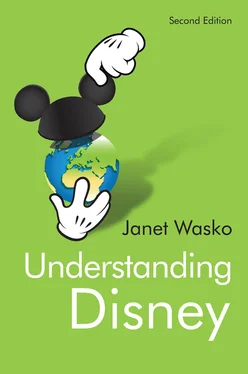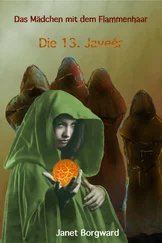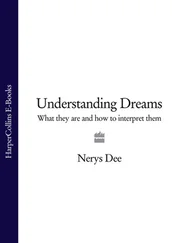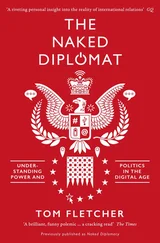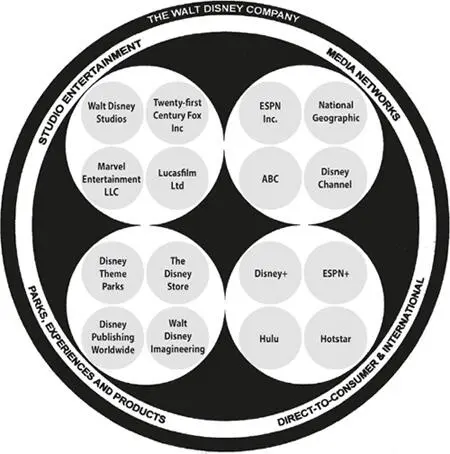
Figure 1.2: The Disney Multiverse
Interestingly, a 2009 episode of the Fox-distributed satirical television show Family Guy was called “Road to the Multiverse.” In the program, Stewie and Brian travel by time machine and at one point visit the “Disney universe,” where they find the characters, dialogue, songs, and settings to be very obviously “Disney-like.” 2In this edition of Understanding Disney , we will be exploring the road to the Disney Multiverse.
Studying Disney can be challenging in many ways. When it is introduced as a topic for discussion, Disney is most often accepted with unqualified approval, and even reverence, by the American public, as well as by many international audience members. Many feel that the Disney company is somehow unique and different from other corporations, and its products are seen as innocent and pleasurable. There is a general sense that its products are only entertainment , as Walt Disney constantly reminded everyone. It is as though the company and its leaders can do no wrong – after all, they’re making so many people so happy. And they do it so well – how can one not be awed by their success?
There is also some hesitancy to discuss Disney as a business, despite the overwhelming emphasis on stockholder value and corporate goals by the company itself. In some settings, calling Walt Disney a “capitalist” would be considered risky, despite his role as head of a profit-motivated company. Furthermore, taking a critical stance towards the company that has created the happiest places on earth may be considered overly pessimistic, not to say downright un-American. After all, why should it be taken so seriously? As we’re told continuously, it’s just entertainment.
Nevertheless, it is important to consider the Disney phenomenon seriously and to insist that it is a legitimate focal point for cultural and social analysis. It is appropriate not only to look more closely at the Disney company and its products but also to critique their role in our culture. Indeed, with the proliferation of Disney products and the diversification of corporate activities, one must insist that Disney is fair game for serious critical review.
This is not to say that the Disney phenomenon has gone unnoticed. Indeed, the attention that Walt Disney, the Disney company, and Disney products have received in print is staggering. Several books consist mainly of references to Disney material, 3while a search on Amazon’s website in September 2018 resulted in more than 50,000 books listed with “Disney” in the title. (Of course, many of these are Disney products.) To this must be added the constant attention that the company and its products receive in the popular press, which has contributed to the Disney phenomenon.
In some academic circles, the study of Disney in particular, and popular culture in general, has been perceived as an irrelevant, frivolous, “Mickey Mouse” occupation. Nevertheless, Disney has been the focus of study in a wide variety of disciplines, with countless books, essays, and articles on Walt Disney, his contribution to animation, the history of the Disney company, and the analysis of its products and their creators.
In the 1930s, cultural pundits and film critics celebrated Disney as art, while members of the Frankfurt School often used Disney characters such as Mickey Mouse and Donald Duck as examples in their discussions of the culture industry. In addition to Michael Real’s study, the Disney empire attracted the attention of communications scholars in several classic studies in the 1970s, specifically Ariel Dorfman and Armand Mattelart’s How to Read Donald Duck and Herbert Schiller’s The Mind Managers . 4
However, in the 1990s, there was a boom in “Disney studies” that attracted the attention of the popular press and others, not always in a favorable way. Numerous scholars continue to direct attention to the phenomenon and have joined in “the fashionable sport of Disney bashing.” Analysis has featured rhetorical, literary, feminist, and psychoanalytic critiques, stressing social issues, such as race and gender representation. Anthropologists, architects, historians, and geographers are still seriously discussing the impact of Disney’s worlds (especially the theme parks), considering their aesthetic, cultural, and social implications.
Why another book (and a second edition) on Disney?
Despite all of the attention and analysis, there is still a need to look at the entire Disney phenomenon from a critical perspective. 5This is especially important in light of the intensification of Disney’s corporate power during the last few decades and its increasingly dominant role in the media/entertainment industry. This book will look at the wide range of perspectives that have been used – and must be used – to understand the Disney Multiverse. The company’s continued expansion and ongoing popularity calls for the deliberate integration of political economic analysis with insights drawn from cultural analysis and audience studies or reception analysis, or, in other words, analysis emphasizing the economic as well as the ideological, or production as well as consumption. In the case of Disney, this approach is expressed in the notion of manufacturing fantasy .
If we are to fully understand the Disney phenomenon, the reception or consumption of Disney products needs to be considered. Though some analysts have attempted to integrate audience responses and reception with textual readings, most of the analyses of Disney texts merely reinforce the subjective nature of these readings. Also, by focusing only on individual texts, the overall output or ideological position represented by Disney is neglected. Herbert Schiller expressed this idea many years ago:
Just as the Disney management finds it profitable to use a systems approach to sell its products, the best way to understand the message it is selling is to adopt a systems analysis approach to the product – that is, to take the Disney machine as an entity, and to examine its many outputs as elements in a totality with some common features. 6
Schiller’s call for a “systems approach” echoes the aim of this book, which is to present an integrated approach to understanding Disney. In other words, the analysis of production, distribution, and consumption of Disney texts is necessary to understand their significance. An integrated approach is especially relevant in considering the Disney theme parks, which present Disney ideologies in material form, providing sites of pleasure, fun, and family entertainment but also serving as highly successful businesses.
In 1997, David Buckingham discussed several books on the Disney phenomenon, pointing out how the studies included economic, textual, and (sometimes) audience research, albeit rarely integrating these forms of analysis. He noted: “Of course, it would be asking too much to expect any single book to incorporate all these dimensions.” 7It is even more of a challenge to examine the “whole” of Disney since the turn of the century, with the extensive expansion of the Disney corporation and the continuous academic and popular attention it receives. However, this book still represents an attempt to look at the Disney Multiverse from a systems perspective and contribute to further understanding its significance. Although every detail cannot be discussed thoroughly, an integrated, interdisciplinary approach can help us to further understand the popularity of Disney over the years, as well as Disney’s role as a major contributor to consumer culture in the United States and around the world.
Читать дальше
